Có nhiều loại cảm biến nhiệt độ khác nhau được sử dụng trên thị trường hiện nay bao gồm đầu dò nhiệt độ điện trở (RTD), cặp nhiệt điện, nhiệt điện trở, cảm biến hồng ngoại và cảm biến bán dẫn. Mỗi người trong số họ có một thông số hoạt động cụ thể. Những cảm biến này có nhiều loại khác nhau, nhưng có một điểm chung: tất cả chúng đều đo nhiệt độ bằng cách cảm nhận sự thay đổi trong đặc tính vật lý.
Thông số vật lý được đo phổ biến nhất là nhiệt độ cho dù trong các ứng dụng công nghiệp quá trình hoặc trong các thiết lập phòng thí nghiệm. Các phép đo chính xác là một phần quan trọng của thành công. Các phép đo chính xác là cần thiết cho nhiều ứng dụng như ứng dụng y tế, nghiên cứu vật liệu trong phòng thí nghiệm, nghiên cứu về các thành phần điện hoặc điện, nghiên cứu sinh học và nghiên cứu địa chất. Thông thường nhất, cảm biến nhiệt độ được sử dụng để đo nhiệt độ trong các mạch điều khiển nhiều loại thiết bị khác nhau.
Có nhiều loại cảm biến nhiệt độ khác nhau được sử dụng trên thị trường hiện nay bao gồm đầu dò nhiệt độ điện trở (RTD), cặp nhiệt điện, nhiệt điện trở, cảm biến hồng ngoại và cảm biến bán dẫn. Mỗi người trong số họ có một thông số hoạt động cụ thể. Những cảm biến này có nhiều loại khác nhau, nhưng có một điểm chung: tất cả chúng đều đo nhiệt độ bằng cách cảm nhận sự thay đổi trong đặc tính vật lý.
Cảm biến nhiệt độ là gì?
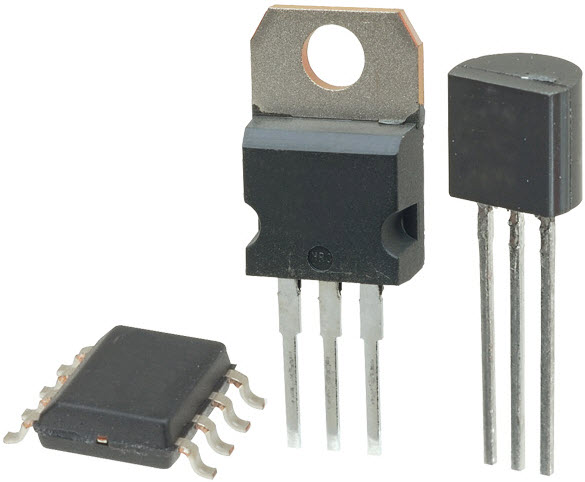
Cảm biến nhiệt độ là một thiết bị, thường là RTD (đầu dò nhiệt độ điện trở) hoặc cặp nhiệt điện, thu thập dữ liệu về nhiệt độ từ một nguồn cụ thể và chuyển đổi dữ liệu thành dạng dễ hiểu cho thiết bị hoặc người quan sát. Cảm biến nhiệt độ được sử dụng trong nhiều ứng dụng như điều khiển môi trường hệ thống HVand AC, bộ xử lý thực phẩm, thiết bị y tế, xử lý hóa chất và ô tô dưới hệ thống giám sát và kiểm soát mui xe, v.v.
Loại cảm biến nhiệt độ phổ biến nhất là nhiệt kế, được sử dụng để đo nhiệt độ của chất rắn, chất lỏng và khí. Nó cũng là một loại cảm biến nhiệt độ phổ biến chủ yếu được sử dụng cho các mục đích phi khoa học vì nó không quá chính xác.
Các loại cảm biến nhiệt độ
Có nhiều loại cảm biến nhiệt độ khác nhau có khả năng cảm biến tùy thuộc vào phạm vi ứng dụng của chúng. Các loại cảm biến nhiệt độ khác nhau như sau:
- Cặp nhiệt điện
- Đầu báo nhiệt độ điện trở
- Nhiệt điện
- Cảm biến hồng ngoại
- Chất bán dẫn
- Nhiệt kế
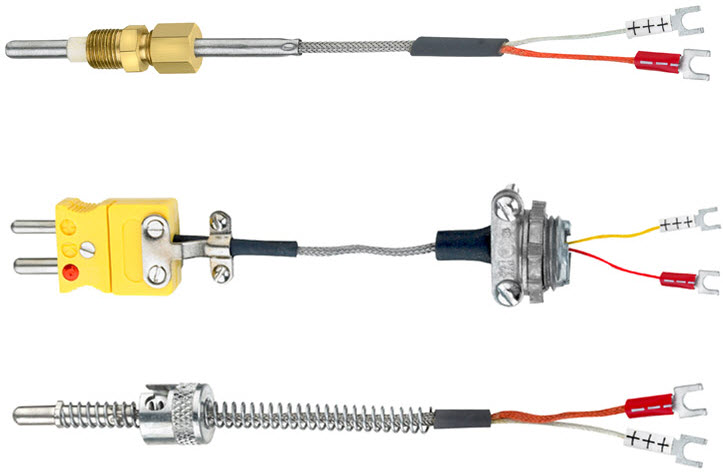
Cảm biến cặp nhiệt điện là cảm biến nhiệt độ được sử dụng phổ biến nhất và nó được viết tắt là TC. Cảm biến này cực kỳ chắc chắn, chi phí thấp, tự cấp nguồn và có thể được sử dụng cho khoảng cách xa. Có nhiều loại cảm biến nhiệt độ có phạm vi ứng dụng rộng.
Một cặp nhiệt điện là một thiết bị điện áp cho biết nhiệt độ bằng cách đo sự thay đổi của điện áp. Nó bao gồm hai kim loại khác nhau: mở và đóng. Các kim loại này hoạt động theo nguyên tắc hiệu ứng nhiệt điện. Khi hai kim loại khác nhau tạo ra một điện áp, thì sự khác biệt nhiệt tồn tại giữa hai kim loại. Khi nhiệt độ tăng, điện áp đầu ra của cặp nhiệt điện cũng tăng.
Cảm biến cặp nhiệt điện này thường được niêm phong bên trong tấm chắn gốm hoặc kim loại bảo vệ nó khỏi các môi trường khác nhau. Một số loại cặp nhiệt điện phổ biến bao gồm K, J, T, R, E, S, N và B. Loại cặp nhiệt điện phổ biến nhất là cặp nhiệt điện loại J, T và K, có sẵn ở dạng tiền chế.
Tính chất quan trọng nhất của cặp nhiệt điện là phi tuyến - điện áp đầu ra của cặp nhiệt điện không tuyến tính đối với nhiệt độ. Do đó, để chuyển đổi điện áp đầu ra thành nhiệt độ, nó đòi hỏi phải tuyến tính hóa toán học.
Đầu dò nhiệt độ điện trở (Resistor Temperature Detector - RTD)
.png)
Cảm biến RTD là một trong những cảm biến chính xác nhất. Trong một máy dò nhiệt độ điện trở, điện trở tỷ lệ thuận với nhiệt độ. Cảm biến này được làm từ bạch kim, niken và kim loại đồng. Nó có một phạm vi rộng các khả năng đo nhiệt độ vì nó có thể được sử dụng để đo nhiệt độ trong phạm vi từ -270oC đến + 850oC. RTD yêu cầu một nguồn hiện tại bên ngoài để hoạt động đúng. Tuy nhiên, dòng điện tạo ra nhiệt trong một phần tử điện trở gây ra lỗi trong các phép đo nhiệt độ. Lỗi được tính theo công thức này:
Delta T = P * S
Trong đó,
- "T": là nhiệt độ,’
- "P": là bình phương năng lượng được tạo ra và
- "S": là một độ C / mill watt
Có nhiều loại kỹ thuật khác nhau để đo nhiệt độ bằng cách sử dụng RTD này. Chúng là hai phương pháp có dây, ba dây và bốn dây. Trong phương pháp hai dây, dòng điện được buộc qua RTD để đo điện áp kết quả. Phương pháp này rất đơn giản để kết nối và thực hiện; và, nhược điểm chính là - điện trở dẫn là một phần của phép đo dẫn đến phép đo sai.
Phương pháp ba dây tương tự như phương pháp hai dây, nhưng dây thứ ba bù cho điện trở dẫn. Trong phương pháp bốn dây, dòng điện được đặt trên một bộ dây và điện áp được cảm nhận trên bộ dây khác. Phương pháp bốn dây này hoàn toàn bù cho điện trở chì.
Cảm biến nhiệt điện trở Thermistors
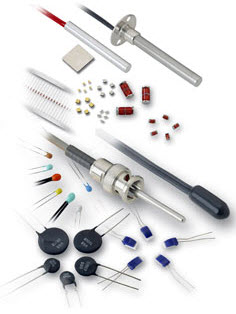
Một loại cảm biến khác là cảm biến nhiệt độ nhiệt điện trở, tương đối rẻ tiền, dễ thích nghi và dễ sử dụng. Nó thay đổi điện trở khi nhiệt độ thay đổi như cảm biến RTD. Nhiệt điện được làm từ mangan và oxit của niken, khiến chúng dễ bị hư hại. Vì vậy, những vật liệu này được gọi là vật liệu gốm. Nhiệt điện trở này cung cấp độ nhạy cao hơn các máy dò nhiệt độ điện trở. Hầu hết các nhiệt điện trở có một hệ số nhiệt độ âm. Nó có nghĩa là, khi nhiệt độ tăng điện trở giảm.
Nhiệt kế Thermometers

Nhiệt kế là một thiết bị được sử dụng để đo nhiệt độ của chất rắn, chất lỏng hoặc chất khí. Nhiệt kế tên là sự kết hợp của hai từ: nhiệt - có nghĩa là nhiệt và đồng hồ có nghĩa là để đo. Nhiệt kế có chứa một chất lỏng, đó là thủy ngân hoặc rượu trong ống thủy tinh của nó. Thể tích của nhiệt kế tỷ lệ tuyến tính với nhiệt độ - khi nhiệt độ tăng, thể tích của nhiệt kế cũng tăng.
Khi chất lỏng được làm nóng, nó nở ra bên trong ống hẹp của nhiệt kế. Nhiệt kế này có một thang đo hiệu chuẩn để chỉ ra nhiệt độ. Nhiệt kế có các số được đánh dấu dọc theo ống thủy tinh để chỉ ra nhiệt độ khi dòng thủy ngân ở điểm đó. Nhiệt độ có thể được ghi lại trong các thang đo này: Fahrenheit, Kelvin hoặc Celsius. Do đó, luôn luôn cần lưu ý rằng thang đo nhiệt kế được hiệu chuẩn.
Cảm biến bán dẫn Semiconductor Sensors
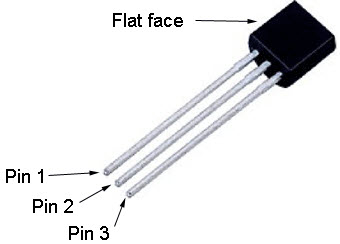
Cảm biến bán dẫn là thiết bị có dạng IC. Phổ biến, các cảm biến này được gọi là cảm biến nhiệt độ IC. Chúng được phân thành các loại khác nhau: Cảm biến nhiệt độ đầu ra hiện tại, Cảm biến nhiệt độ đầu ra điện áp, Cảm biến nhiệt độ đầu ra silicon, Cảm biến nhiệt độ Diode và Cảm biến nhiệt độ đầu ra kỹ thuật số. Các cảm biến nhiệt độ bán dẫn hiện tại cung cấp độ tuyến tính cao và độ chính xác cao trong phạm vi hoạt động từ khoảng 55 ° C đến + 150 ° C. Tuy nhiên, cảm biến nhiệt độ AD590 và LM35 là những cảm biến nhiệt độ phổ biến nhất.
Cảm biến hồng ngoại IR sensor
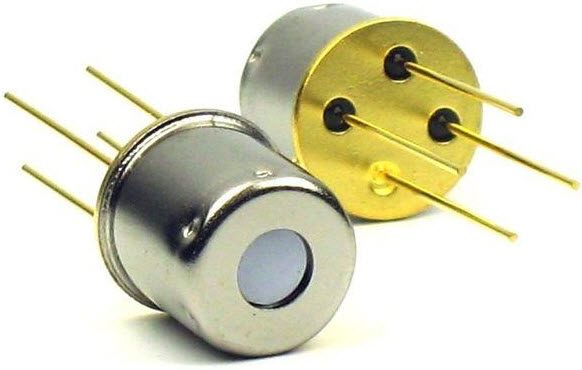
Cảm biến hồng ngoại là một thiết bị điện tử được sử dụng để cảm nhận các đặc điểm nhất định của môi trường xung quanh bằng cách phát hoặc phát hiện bức xạ hồng ngoại. Những cảm biến này là cảm biến không tiếp xúc. Ví dụ: nếu bạn giữ cảm biến hồng ngoại trước bàn mà không thiết lập bất kỳ tiếp xúc nào, cảm biến sẽ phát hiện nhiệt độ của bàn dựa trên giá trị bức xạ của nó. Các cảm biến này được phân thành hai loại như cảm biến hồng ngoại nhiệt và cảm biến hồng ngoại lượng tử.
Vì vậy, đây là tất cả về các loại cảm biến nhiệt độ khác nhau. Chi phí của cảm biến nhiệt độ phụ thuộc vào loại công việc mà nó được dự định. Tuy nhiên, độ chính xác của cảm biến sẽ quyết định giá. Vì vậy, chi phí phụ thuộc vào độ chính xác của cảm biến nhiệt độ.
English edition
The most commonly measured physical parameter is temperature whether in process industry applications or in laboratory settings. Exact measurements are critical part of success. Exact measurements are needed for many applications such as medical applications, materials research in labs, studies of electronic or electrical components, biological research, and geological studies. Most commonly, temperature sensors are used to measure temperature in circuits which control a variety of equipment’s.
There are different types of temperature sensors used in the market today including resistance temperature detectors (RTDs), thermocouples, thermistors, infrared sensor , and semiconductor sensors. Each of them has a particular operating parameters. These sensors come in different varieties, but have one common thing: they all measure temperature by sensing a change in the physical characteristic.
What Is a Temperature Sensor?
A temperature sensor is a device, usually an RTD (resistance temperature detector) or a thermocouple, that collects the data about temperature from a particular source and converts the data into understandable form for a device or an observer. Temperature sensors are used in many applications like HVand AC system environmental controls, food processing units, medical devices, chemical handling and automotive under the hood monitoring and controlling systems, etc.
The most common type of temperature sensor is a thermometer, which is used to measure temperature of solids, liquids and gases. It is also a common type of temperature sensor mostly used for non-scientific purposes because it is not so accurate.
Types of Temperature Sensors
There are different types of temperature sensors that have sensing capacity depending upon their range of application. Different types of temperature sensors are as follows:
- Thermocouples
- Resistor temperature detectors
- Thermistors
- Infrared sensors
- Semiconductors
- Thermometers
- Thermocouples
Thermocouple sensor is the most commonly used temperature sensor and it is abbreviated as TC. This sensor is extremely rugged, low-cost, self-powered and can be used for long distance. There are many types of temperature sensors that have a wide range of applications.
A thermocouple is a voltage device that indicates temperature by measuring a change in the voltage. It consists of two different metals: opened and closed. These metals work on the principle of thermo-electric effect. When two dissimilar metals produce a voltage, then a thermal difference exists between the two metals. When the temperature goes up, the output voltage of the thermocouple also increases.
This thermocouple sensor is usually sealed inside a ceramic shield or a metal that protects it from different environments. Some common types of thermocouples include K, J, T, R, E, S, N, and B. The most common type of thermocouples is J, T and K type thermocouples, which are available in pre-made forms.
The most important property of the thermocouple is nonlinearity – the output voltage of the thermocouple is not linear with respect to temperature. Thus, to convert an output voltage to a temperature, it requires mathematical linearization.
Resistor Temperature Detector (RTD)
RTD sensor is one of the most accurate sensors. In a resistor temperature detector, the resistance is proportional to the temperature. This sensor is made from platinum, nickel, and copper metals. It has a wide range of temperature measurement capabilities as it can be used to measure temperature in the range between -270oC to +850oC. RTD requires an external current source to function properly. However, the current produces heat in a resistive element causing an error in the temperature measurements. The error is calculated by this formula:
Delta T=P*S
Where, ‘T’ is temperature, ‘P’ is I squared power produced and ‘S’ is a degree C/mill watt
There are different types of techniques to measure temperature by using this RTD. They are two wired, three-wired and four-wired method. In a two-wired method, the current is forced through the RTD to measure the resulting voltage. This method is very simple to connect and implement; and, the main drawback is – the lead resistance is the part of the measurement which leads to erroneous measurement .
Three-wired method is similar to the two-wired method, but the third wire compensates for the lead resistance. In a four-wired method, the current is forced on one set of the wires and the voltage is sensed on the other set of wires. This four-wired method completely compensates for the lead resistance.
Thermistors
Another type of sensor is a thermistor temperature sensor, which is relatively inexpensive, adaptable, and easy to use. It changes its resistance when the temperature changes like RTD sensor. Thermistors are made from manganese and oxides of nickel, which make them susceptible to damages. So, these materials are called ceramic materials. This thermistor offers higher sensitivity than the resistor temperature detectors. Most of the thermistors have a negative temperature coefficient. It means, when the temperature increases the resistance decreases.
Thermometers
A thermometer is a device used to measure the temperature of solids, liquids, or gases. The name thermometer is a combination of two words: thermo – means heat, and meter means to measure. Thermometer contains a liquid, which is mercury or alcohol in its glass tube. The volume of the thermometer is linearly proportional to the temperature – when the temperature increases, the volume of the thermometer also increases.
When the liquid is heated it expands inside the narrow tube of the thermometer. This thermometer has a calibrated scale to indicate the temperature. The thermometer has numbers marked alongside the glass tube to indicate the temperature when the line of mercury is at that point. The temperature can be recorded in these scales: Fahrenheit, Kelvin or Celsius. Therefore, it is always desirable to note for which scale the thermometer is calibrated.
Semiconductor Sensors
Semiconductor sensors are the devices that come in the form of ICs. Popularly, these sensors are known as an IC temperature sensor. They are classified into different types: Current output temperature sensor, Voltage output temperature sensor, Resistance output silicon temperature sensor, Diode temperature sensors and Digital output temperature sensor. Present semiconductor temperature sensors offer high linearity and high accuracy over an operating range of about 55°C to +150°C. However, AD590 and LM35 temperature sensors are the most popular temperature sensors.
IR sensor
IR sensor is an electronic instrument which is used to sense certain characteristics of its surroundings by either emitting or detecting IR radiation. These sensors are non-contacting sensors. For example, if you hold an IR sensor in front of your desk without establishing any contact, the sensor detects the temperature of the desk based on the merit of its radiation. These sensors are classified into two types such as thermal infrared sensors and quantum infrared sensors.
Thus, this is all about different types of temperature sensors. The cost of the temperature sensor depends on the type of work it is intended for. However, the accuracy of the sensor will decide the price. So, the cost depends on the accuracy of the temperature sensor. Present temperature sensors intended at reducing the cost as well as efficiency. For more information regarding this type of sensors please visit our website Edgefxkits.com, also post your comments in the comment section below.
(Nguyễn Thảo Trường - http://DienElectric.com theo edgefx)
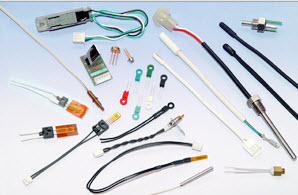

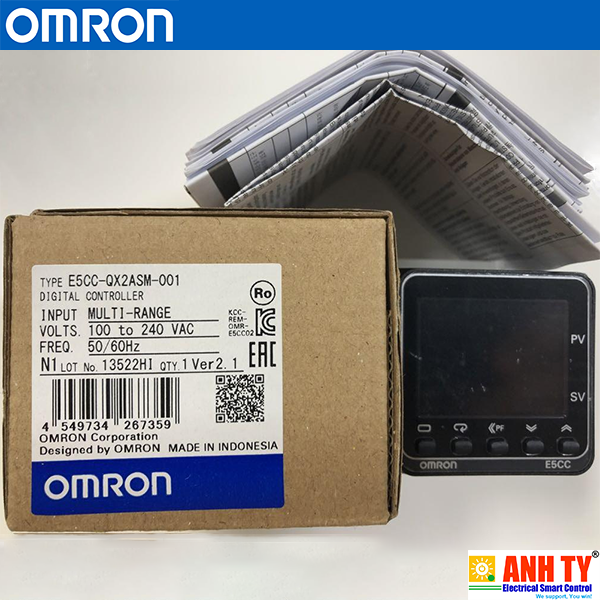
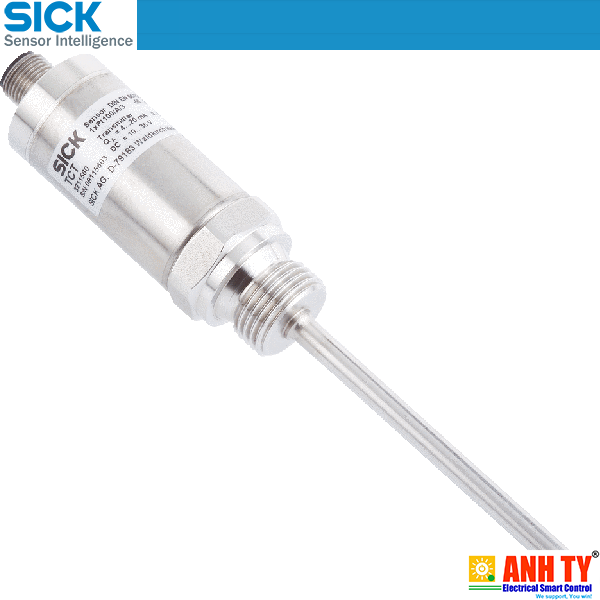


.png)



